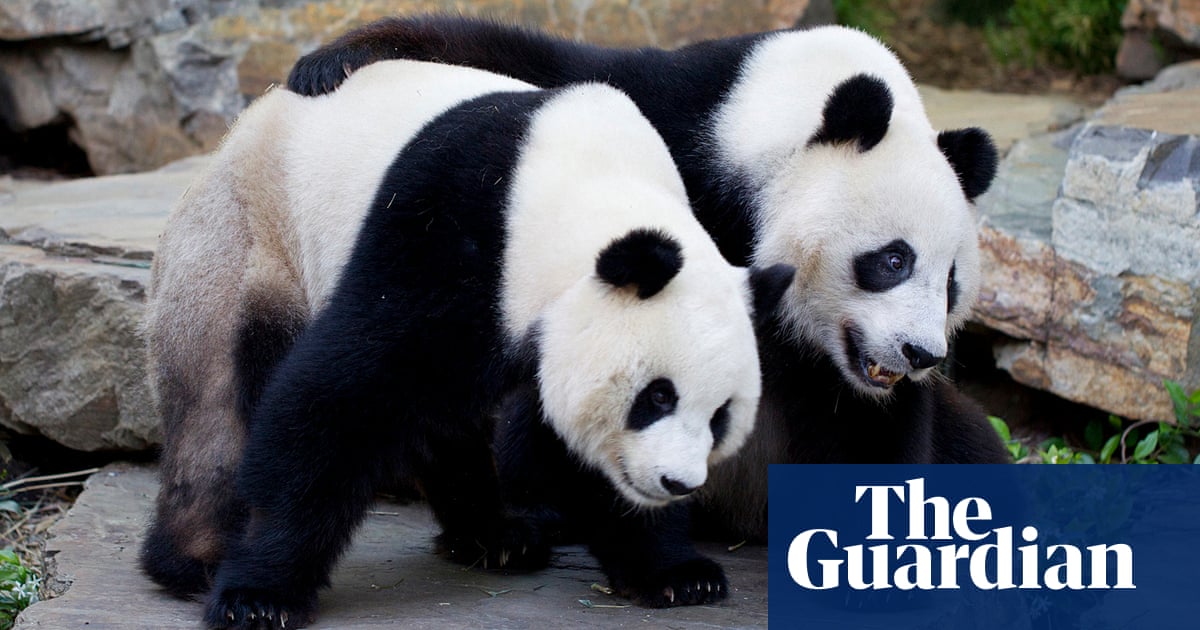
Australia’s giant pandas – having failed to breed – could be swapped out for a new pair.
Chinese premier Li Qiang is expected to make an announcement about the future of the rare bears when he visits South Australia on the weekend.
Wang Wang and Fu Ni arrived at Adelaide Zoo in 2009, and the decade-long contract has been extended to the end of this year. But, year after year, the notoriously sex-shy creatures have failed to conceive.
Not that that is their only job – they are also part of international panda diplomacy, and a public relations exercise for wildlife conservation.
The Zoos SA chief executive officer, Elaine Bensted, told ABC Adelaide that the options on the table were “that we don’t get to keep giant pandas in Adelaide, that we keep Wang Wang and Fu Ni, or that Wang Wang and Fu Ni return to China and some new pandas arrive”.
“We’re still in those discussions… Our preference has always been that we keep giant pandas in Adelaide,” she said.
Zoos SA declined further interviews but Bensted said in a statement that she was “encouraged by the continued talks with the China Wildlife Conservation Association regarding the future of giant pandas at Adelaide Zoo”.
Both are nearing the age of 20. The oldest panda to have given birth was 23.
On Tuesday, the prime minister, Anthony, Albanese said he didn’t want to pre-empt any decision but that his government was “pro-panda”.
“We like panda bears and so do, I reckon, Australians,” he said.
In March, the foreign affairs minister, Penny Wong, seemed to endorse local reports that Australia would not be left without pandas, saying “the likely continuation of panda presences in Adelaide Zoo has been reported”. Her comments follow a meeting with her Chinese counterpart, Wang Yi.
Li, the Chinese premier, will be in Australia from Saturday to Tuesday, with trade likely to be a hot topic. It is the first visit by a Chinese premier since 2017, and Albanese said it was a step towards stabilising the often tense relationship.
Towards the end of last year, data from China’s National Forestry and Grassland Administration showed about 63 pandas were on loan to 19 countries.
So-called “panda diplomacy” allows China to strengthen ties with other nations by loaning the animals (for a fee), or to show displeasure by removing them.
There are about 1,900 pandas in the wild in China now, up from about 1,100 in the 1980s. The improvement saw the International Union Conservation of Nature lift their status from endangered to vulnerable. One of the reasons they are still vulnerable is the difficulty they have breeding.
The mating window is only about a day and a half, about once a year. In captivity, artificial insemination is often used, but in Adelaide it has been unsuccessful.
after newsletter promotion
Hopes have been lifted when Fu Ni has climbed a tree – her subsequent climbing down indicates that she’s ready. Wang Wang will do a “panda twerk” to spray his scent around the tree.
Fu Ni has had several phantom pregnancies. Pregnancies are extremely hard to confirm until just before birth, but sometimes pandas falsely give all the signs of a pregnancy. And sometimes they can also reabsorb a foetus if there are environmental stressors.
Darren Grover, the acting chief conservation officer at the World Wide Fund for Nature-Australia, said pandas were “incredibly difficult” to breed in captivity. While they’re solitary creatures, the males will gather in the days or weeks before the female’s breeding window opens.
“They all fight each other and the lucky winner then goes and breeds with the female that year. So there’s a trigger for probably a big surge of testosterone in the males. If you’re the only male panda in captivity, you don’t have that trigger,” he said.
“They’ve tried things with zookeepers dressing up in panda suits. But they’re powerful animals so it’s a very dangerous thing to do.
“Without that interaction, that fighting, a single male panda might not have any inclination to breed. He’s just sitting around, eating bamboo and sleeping.”
The panda became WWF’s logo in the 60s, when there was some early panda diplomacy with a bear going to London Zoo. The publicity for the little-known creature was huge, and they became a recognisable symbol of conservation.
Grover said despite the breeding difficulties, having pandas in zoos can raise their profile and help people understand the threats they’re facing.
“If pandas can be used to build peaceful relationships between different nations, that’s gotta be a good thing too I suppose,” he said.
“But ultimately what you want it to come down to is the conservation of pandas.”
Source: theguardian.com


















